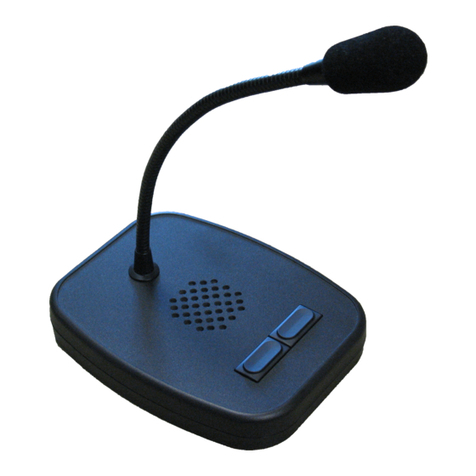- 10 - mbos2b (13.03.2014)
Kompetent für Elektroniksysteme
006 Busy In, configuration of functions
1st digit Busy In circuit 1
2nd digit Busy In circuit 2
3rd digit Busy In circuit 3
4th digit Busy In circuit 4
1st - 4th Stelle Busy In no function = 0
active, mutes circuit = 1
active, disables PTT keying =2
active, disables PTT keying and mutes circuit = 3
active, disables circuit activation = 4
active, disables circuit activation and mutes circuit = 5
active, disables activation of any circuit = 6
active, disables activation of any circuit and mutes circuit = 7
007 TX In LED configuration
1st digit TX In circuit 1
2nd digit TX In circuit 2
3rd digit TX In circuit 3
4th digit TX In circuit 4
1st - 4th digit TX In no function = 0
active, TX-LED flashes = 1
008 TX In Funktionskonfiguration
1st digit TX In circuit 1
2nd digit TX In circuit 2
3rd digit TX In circuit 3
4th digit TX In circuit 4
1st - 4th digit TX In no function = 0
active, mutes circuit = 1
active, disables PTT keying = 2
active, disables PTT keying and mutes circuit = 3
009 Duplex configuration
1st digit TX In circuit 1
2nd digit TX In circuit 2
3rd digit TX In circuit 3
4th digit TX In circuit 4
1st - 4th digit simplex = 0
duplex = 1
010 AF input configuration of deactivated circuits
011 AF input configuration of activated circuits
1st digit circuit 1 to loudspeaker
2nd digit circuit 2 to loudspeaker
3rd digit circuit 3 to loudspeaker
4th digit circuit 4 to loudspeaker
5th digit circuit 1 to earpiece
6th digit circuit 2 to earpiece
7th digit circuit 3 to earpiece
8th digit circuit 4 to earpiece
1st - 8th digit circuit is muted = 0
listening volume = 1
maximum volume = 2 or 3
Register Function





























